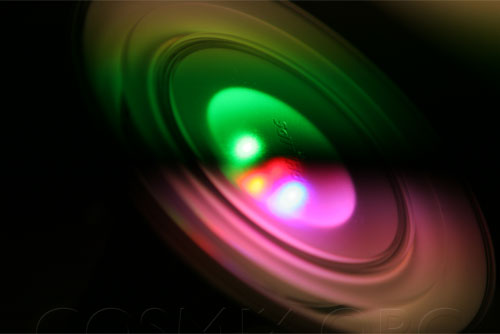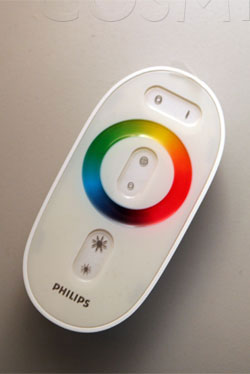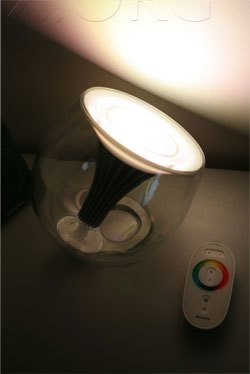Philips has been an electronics pioneer for many decades and while it has recently been facing stiff competition from newcomers from Asia, there are still some signs of innovation in some of its products.
Light Emitting Diode (LED) lighting is one of the main candidates as a worthy successor of the incandescent bulb as the main source of artificial light. Its currently more popular competitor, fluorescent lighting, as used in traditional tube bulbs and the more recent Compact Fluorecent Lamps (CFL), while energy efficient, is marred by several drawbacks: bad quality light, difficulty in dimming, awkward designs/large footprint.
LED lighting on the other hand provides excellent colour quality, has a very small footprint and is increasingly becoming more powerful, cheaper and much more efficient than before. It has seen extensive use both for decorative and ambient lighting outdoors. Philips has been one of the leading companies providing lighting solutions based on LEDs, after its acquisition of Lumileds, formerly a joint venture with Agilent Technologies (the erstwhile R&D divison of Hewlett Packard). LED lighting is expensive and requires careful design as the LEDs are typically not as powerful as any of the alternatives. They are also comparatively maintenance-free — LEDs have a very, very long life.
While there have been several industrial/commercial projects that employ LEDs in lighting landmarks, bridges, buildings etc. worldwide, as well as extensive use in breaking lights for vehicles or traffic lights among other industrial uses, there has been relatively little penetration of LEDs in home-lighting.
Philips’ Living Colours is a product aiming to bring LEDs to your home. It is a modern lamp with a minimalist design, (reminiscent of late 1990s-early 2000s Apple designs that are based on translucency and white plastics) and allows for any out of several thousands of colours to be selected within seconds, through the use of four high-power LEDs: two red, one blue and one green; Philips claims that the lamp can produce 16.7 million colours (24bit), but that is a theoretical limit possible given 8bits per colour and not the actual capability of the lamp, given the limitations of the diffuser, the LEDs and the power and control mechanisms.
The lamp is controlled by a Radio Frequency remote control (meaning you don’t necessarily have to ‘see’ the lamp to change its colour or turn it on/off. The remote employs an Apple iPod ‘touchwheel’ that allows the user to smoothly choose among colours. The colour saturation and its intensity are also adjustable. A single remote can be programmed to control up to six Living Colours lamps simultaneously in order to provide a uniform lighting environment if more than one lamps are used within a room.



The output of the lamp is comparable to a 15W incandescent lamp. This is more or less equivalent to a small desk lamp. Combined with a large white wall, one or more Living Colours lamps can instantly change the atmosphere of the room: For example you could flood it with warm amber or yellow light or a cool purple or blue light depending on your mood or a special event.
The LEDs are an excellent source of lighting as they are already very efficient (and are expected to render existing fluorescent solutions obsolete by more than an order of magnitude in the near future) and can last several decades. They also provide much higher quality lighting compared to fluorescent bulbs.
Buying the lamp was probably one of the single best things I ever did to improve the atmosphere of my bedroom. They are relatively weak and extremely pricey, a difficult combination, but are worth the money, especially if æsthetics and lighting in your indoors living space are important to you.

‘Living Colours’ can be purchased in Europe (and most probably the United States at the time of writing) with prices ranging between €140 and €200, admittedly considerably more than what the average household is willing to spend on one relatively weak lamp. Nevertheless, given the energy costs and the decorative value it offers to its owners, it might not be such a bad proposition to some of you out there. Either way, prices are bound to go down and the promise of LED lighting is becoming reality sooner than I expected.
